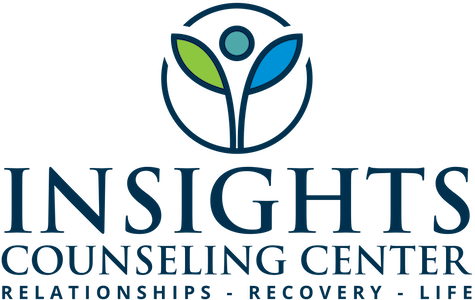Understanding Enmeshment: A Path to Healing
In the journey of healing from emotional trauma, it is essential to shed light on the concept of parental enmeshment. This intricate and often challenging dynamic can manifest within the parent-child relationship, impacting an individual's emotional well-being well into adulthood. To explore this topic further, we delve into the insightful work of Ken Adams, a renowned therapist specializing in trauma and attachment.
A Message of Compassion & Healing to Parents
Before we begin, we want you to know that we understand enmeshment is most often not intentional, but rather arises from a place of deep love and concern. This post is not meant to assign blame or instill guilt but to create an opportunity for healing and growth for both you and your now-adult children.
Just as enmeshment was subtle and hidden, the resulting damage can also manifest in ways that may not be immediately apparent until navigating confusing conflict with your now adult-children or seeing them struggle in their adult relationships. Our purpose is to offer help, healing, and guidance to empower both you and your now-adult children in creating and maintaining healthy, thriving relationships within your family.
The effects of enmeshment often emerge in adulthood and can be challenging for both parents and children. It's important to recognize that this dynamic develops gradually, often without conscious awareness. Understanding this can foster empathy, self-reflection, and a shared commitment to healing.
By acknowledging the unintended consequences of enmeshment, parents can embrace the opportunity for healing and growth together with their adult children. It can be an opportunity to learn and unlearn patterns, redefine the parent-child relationship, and foster healthy boundaries and connections.
We want to emphasize that our resource is not intended to judge or blame, but to offer guidance and support for everyone involved. Healing from enmeshment can be a transformative journey, allowing for individual growth and the cultivation of healthier, more authentic dynamics within the family unit.
Our specialty-trained therapists in enmeshment understand the complexities involved and can help you navigate this delicate terrain with empathy, understanding, and tools for healing. By embarking on this journey together, parents and adult children can open doors to authentic connections, emotional well-being, and a shared exploration of what it means to foster love, independence, and personal growth within the family unit.
You are not alone. We are here to support you every step of the way.
What is Enmeshment?
Enmeshment refers to a boundary-blurring relationship pattern between a child and their parent. In an enmeshed dynamic, the child experiences an over-involvement of their parent in their thoughts, feelings, and decisions, often at the expense of their own individuality. This form of enmeshment can hinder healthy emotional development and create long-lasting challenges in adult relationships.
There is often a significant impact of parental enmeshment on individuals' psychological and emotional development. Patterns that may emerge as a result of this dynamic are a lack of self-identity, difficulty setting boundaries, and challenges in forming and maintaining healthy relationships.
Examples of Enmeshed Parent-Child Relationships
Enmeshment within parent-child relationships can manifest in various ways, with unique dynamics and circumstances in each case. Here are a few hypothetical scenarios that illustrate common patterns of enmeshment:
The Overprotective Mother: Rachel, a 15-year-old, has a mother who is incredibly overprotective. Her mother is constantly making decisions on her behalf, such as choosing her clothing, deciding who she can spend time with, and even being heavily involved in her school assignments. Rachel feels suffocated as if she has no agency or independence. Her mother's excessive involvement prevents her from developing a sense of self-identity and autonomy.
The Emotional Spillover: Mark, a 12-year-old, has a father who relies on him for emotional support and comfort. Whenever his father is upset or anxious, he leans on Mark to soothe him. Mark feels a sense of responsibility to take care of his father's emotional well-being, often neglecting his own emotions and needs. This dynamic blurs the boundary between parent and child, leaving Mark feeling emotionally overwhelmed and unable to develop healthy coping strategies of his own.
The Surrogate Spouse: Alex, a 14-year-old, has a mother who is going through a difficult time in her marriage and depends heavily on Alex to fill the role of the missing spouse. Alex's mother talks to her child about her marital problems, discusses intimate details about her relationship with her husband, and depends on Alex to meet her emotional needs. Despite feeling overwhelmed and burdened by this dynamic, Alex feels responsible for their mother's emotional well-being and neglects their own emotional needs in the process. This situation blurs the boundary between parent and child, leaving Alex feeling emotionally burdened and unable to pursue individual personal growth.
The Best Friends Dynamic: Sarah, a 17-year-old, has a mother who treats her like a best friend rather than a parent. They do everything together, including sharing intimate details about their personal lives, going out for late-night outings, and even discussing adult topics that go beyond Sarah's developmental stage. This boundary-blurring dynamic prevents Sarah from experiencing a healthy parent-child relationship and impedes her ability to establish independence and form healthy peer relationships.
The Involved Parent as a Result of Trauma: Emily, a 14-year-old, has a mother who experienced significant trauma in her own life. As a result, her mother is overly involved in every aspect of Emily's life, attempting to shield her from potential harm or danger. She constantly monitors Emily's activities, relationships, and whereabouts, fearing that something terrible will happen. This excessive involvement prevents Emily from developing a sense of agency and self-trust, hindering her ability to navigate the world independently.
These examples highlight how enmeshment can manifest in different parent-child relationships. It is important to remember that each situation is nuanced and unique, and these examples should not be used to diagnose or label individuals. The aim is to offer some insight into the dynamics that can signify an enmeshed relationship.
The Unaddressed Effects of Enmeshment and Their Impact on Adult Life
In the journey of healing from enmeshment, it is crucial to acknowledge the potential complications and conflicts that may arise when this dynamic goes unaddressed. When enmeshment is not recognized and addressed, its influence can reverberate into adulthood, affecting various aspects of one's life. Here are a few examples that shed light on the potential complications and conflicts that may play out:
Identity Diffusion: Unaddressed enmeshment can lead to a lack of clear self-identity in adulthood. Individuals may struggle to define their own wants, needs, and values separate from the expectations and desires of others. This can result in a sense of being lost or disconnected from their authentic selves, hindering personal growth and creating difficulties in forming fulfilling relationships.
Boundary Challenges: When enmeshment goes unaddressed, setting and maintaining healthy boundaries becomes arduous. Individuals may struggle with asserting their needs, saying no, and creating space for themselves. This can lead to a pattern of being overly accommodating or feeling overwhelmed by the demands and emotions of others. Unresolved boundary challenges can strain personal relationships, affect professional success, and contribute to emotional distress.
Codependency Patterns: Enmeshment can cultivate codependent relationships, where individuals become overly reliant on others for validation, emotional support, or a sense of self-worth. When enmeshment goes unaddressed, these codependent patterns may persist into adulthood, hindering individuals' ability to develop a healthy sense of self-reliance and autonomy. Codependency can inhibit personal growth, create imbalanced power dynamics, and contribute to emotional and relational difficulties.
Interpersonal Struggles: Unaddressed enmeshment can give rise to challenges in forming and maintaining healthy relationships. Individuals may struggle to establish and sustain boundaries, experience difficulty in trusting others, and have challenges with intimacy and emotional vulnerability. The interplay between enmeshment and adult relationships can lead to a cycle of unhealthy dynamics, such as emotional dependency, control, or a lack of independence.
Self-Exploration and Fulfillment: When enmeshment goes unaddressed, it can impede individuals' ability to explore their own interests, pursue personal goals, and experience a sense of fulfillment. The constant focus on meeting the emotional needs and expectations of others can overshadow one's own desires, dreams, and aspirations. This can result in a life that feels unfulfilling, lacking a true sense of purpose and individuality.
Recognizing the lingering effects of unaddressed enmeshment is an essential step toward healing and growth. By seeking the support of a licensed therapist trained in enmeshment, individuals can begin the transformative process of understanding, releasing, and healing from the complications and conflicts that may arise from unaddressed enmeshment. Remember, you are not alone. With the right guidance and support, it is possible to break free from the struggles of unaddressed enmeshment and embark on a path toward personal freedom, authentic connections, and a life of fulfillment.
Navigating the Healing Journey
Healing from enmeshment is a deeply personal and often complex journey. Each individual's experience is unique, and it is crucial to approach this process with compassion, empathy, and professional guidance. Here are a few key steps to take on the path to healing:
Recognize the Enmeshment: The first step towards healing is acknowledging and understanding the enmeshed dynamic within the parent-child relationship. Recognizing the effects of enmeshment provides a foundation for self-exploration and growth.
Seek Professional Support: Engaging with a licensed therapist who specializes in trauma, attachment, and enmeshment can provide invaluable support on your healing journey. The CSAT therapists at Insights Counseling have trained under Ken Adams. Some have gone on to do extra training in this area to best work with individuals impacted by an enmeshed parental relationship.
Establish Healthy Boundaries: Learning to set and maintain healthy boundaries is a fundamental aspect of healing from enmeshment. With the guidance of a therapist, you can explore strategies to establish boundaries that nurture your individuality while maintaining healthy connections with others.
Cultivate Self-Identity: Building a sense of self-identity is an essential aspect of healing from enmeshment. This process involves reconnecting with your own wants, needs, and dreams, free from the influence of enmeshment. Working with a therapist can help you rediscover and cultivate your true self.
Form Healthy Relationships: As you embark on your healing journey, it is important to focus on fostering healthy relationships. By understanding the impact of enmeshment, you can build connections that allow for mutual respect, healthy boundaries, and emotional growth.
Finding Hope in Healing
While the journey of healing from enmeshment may seem daunting, it is important to remember that you are not alone. By recognizing the impact of enmeshment and seeking therapeutic support, you can begin to reclaim your sense of self and form healthy, fulfilling relationships.
Remember, healing takes time, patience, and dedication. And with the right support, you can navigate the complexities of enmeshment and emerge stronger, more authentic, and ready to embrace a life filled with self-discovery and emotional well-being.
If you identify with any of these scenarios or believe that you may be in an enmeshed dynamic, seeking the guidance of an enmeshment-trained therapist can provide the support and tools needed to navigate and heal from these challenges. At times this overlaps a pattern of sex addiction and betrayal trauma. Remember, healing and growth are possible; reach out today to begin your healing journey.

